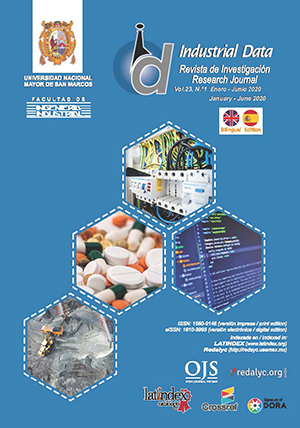Basics for Forecasting a Stationary Time Series Using Information from Its Past
DOI:
https://doi.org/10.15381/idata.v23i1.16504Keywords:
time series, stationarity, unit root, white noise, varianceAbstract
Since market behavior is volatile, this research intends to help investors and business organizations make forecasts with certainty and, as a consequence, with the least possible error in order to succeed in the management of their projects and operations. Elements such as inflation rate, exchange rate, stock prices, economic and financial results, sales, among other variables, are causes of concern for investors. Due to their data structure, these financial instruments correspond to time series, which take values or realizations along time and are spaced over time. The previous behavior of the series is used to forecast its value, return and volatility. It must be taken into consideration that forecasting using traditional techniques might result in imprecisions, so it is necessary to forecast using econometric models because of their robustness and precision. These are also known as univariate time series models.
Downloads
Downloads
Published
Issue
Section
License
Copyright (c) 2020 Wilfredo Bazán Ramírez

This work is licensed under a Creative Commons Attribution-NonCommercial-ShareAlike 4.0 International License.
AUTHORS RETAIN THEIR RIGHTS:
a. Authors retain their trade mark rights and patent, and also on any process or procedure described in the article.
b. Authors retain their right to share, copy, distribute, perform and publicly communicate their article (eg, to place their article in an institutional repository or publish it in a book), with an acknowledgment of its initial publication in the INDUSTRIAL DATA.
c. Authors retain theirs right to make a subsequent publication of their work, to use the article or any part thereof (eg a compilation of his papers, lecture notes, thesis, or a book), always indicating the source of publication (the originator of the work, journal, volume, number and date).






